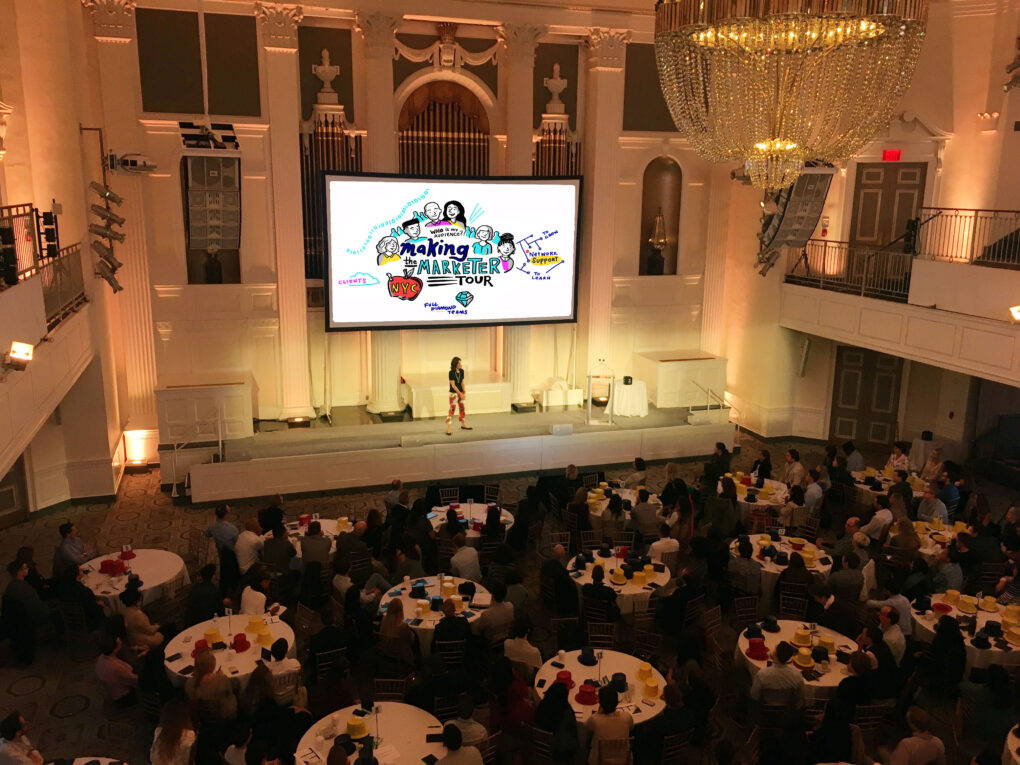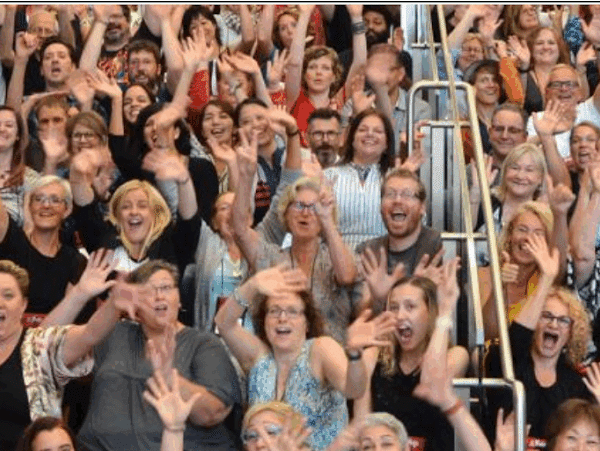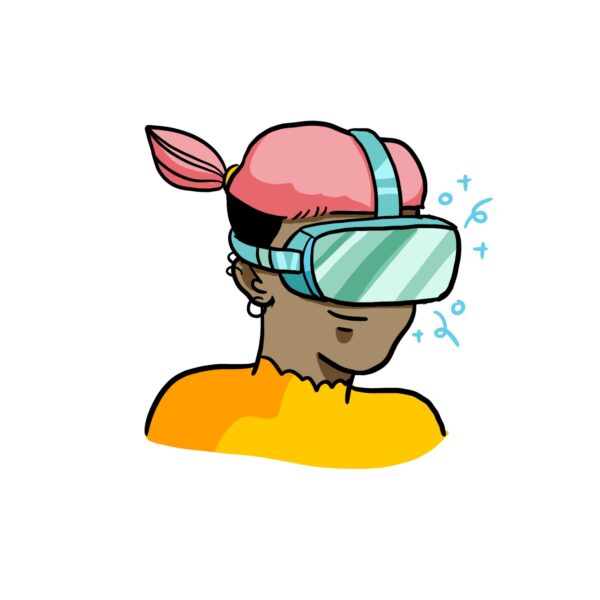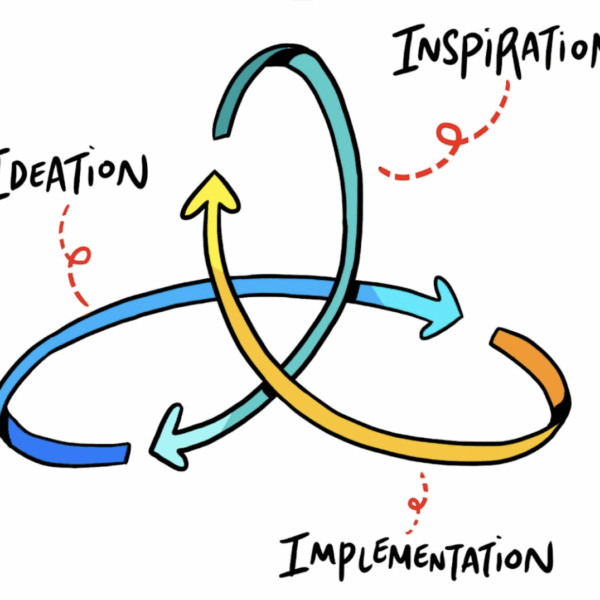
The Power of Visual Thinking at Events
Sitting through another PowerPoint-heavy presentation and struggling to stay engaged as slide after slide of bullet points blur together… yeah we get it!
In our information-saturated lives, audiences remember just 10% of what they hear after three days.
But when you add visuals? Retention soars to 65%
This is why Fortune 500 companies, TED conferences, and leading industry summits are increasingly using live graphic recording (also called sketchnoting or visual harvesting) to:
- Boost engagement by giving audiences something compelling to watch
- Improve comprehension through visual metaphors and structures
- Create shareable artifacts that extend the event’s impact
- Facilitate better discussions by making abstract ideas concrete
Let’s explore how this works across three key event formats:
1. Keynotes That Actually Stick
The Problem With Traditional Presentations
Even the most dynamic speakers struggle with:
- Audience attention spans that wane after 10 minutes
- Important messages getting lost in delivery
- No tangible takeaway beyond a slide deck
How Graphic Recording Helps
A skilled graphic recorder acts as a visual translator, creating a real-time storyboard that:
- Highlights core themes with memorable imagery
- Organizes complex information into clear frameworks
- Creates a viral-ready visual summary for social sharing
2. Panel Discussions That Don’t Meander
Why Most Panels Fall Flat
Without visual support, panel discussions often suffer from:
- Conversations that circle without resolution
- Important points getting lost in the back-and-forth
- No synthesis of different perspectives
The Graphic Recording Advantage
Our recorders act as visual moderators, creating maps that:
- Show areas of agreement/disagreement through spatial organization
- Connect disparate ideas with arrows and containers
- Highlight key takeaways everyone can reference
3. Breakout Sessions With Real Outcomes
The Breakout Group Struggle
Most breakout sessions end with:
- Ideas trapped on flip charts that no one photographs
- No clear connection between different groups’ work
- Participants unsure how their discussion fits the bigger picture
Visual Synthesis to the Rescue!
Graphic recorders transform breakouts by:
- Capturing each group’s key points in a consistent visual style
- Identifying patterns across all discussions
- Creating a master visual for the report-back session
Before Your Event: Set the Foundation
- Share Context Early: Provide speaker materials, session goals, and audience insights so your visual strategist can align with your narrative arc.
- Clarify Strategic Priorities: Identify the key messages, themes, or outcomes you want to elevate through visual storytelling.
- Discuss Complex Content: Highlight any dense, technical, or nuanced concepts that could benefit from simplified visual translation.
- Schedule a Co-Creation Touchpoint: Build in a pre-session call to align on tone, style, and messaging—ensuring visuals support both the agenda and the audience.
During the Event: Engage and Align
- Introduce the Visual Strategist Upfront: Briefly introduce ImageThink’s role at the beginning to invite attention to the visuals as a dynamic tool—not décor.
- Use Visuals to Recap Key Moments: Build in 2–3-minute recaps throughout the agenda using the evolving boards as visual prompts.
- Leverage Visuals as a Bridge Between Sessions: Use the boards to tie together themes and foster continuity across speakers or breakout groups.
- Plan a Gallery Walk: Turn the visuals into an end-of-day gallery that encourages informal conversation, reflection, and alignment.
- Designate a Debrief Moment: End sessions with a short guided discussion using the visuals to cement understanding and spark dialogue.
After the Event: Extend the Impact
- Turn Visuals into a Strategic Recap: Share the final boards in your follow-up communications to reinforce key takeaways and support knowledge retention.
- Integrate into Internal Presentations: Use sections of the visuals in leadership decks and strategy meetings to drive alignment and momentum.
- Extend the Reach on Social Media: Share select frames or highlights on LinkedIn to showcase thought leadership and spark post-event conversation.
- Use as a Launchpad for What’s Next: Treat the visuals as a foundation for planning next steps—whether that’s a roadmap session, workshop, or team alignment meeting.
Why This Matters More Than Ever
In our hybrid event world, graphic recording:
- Gives remote attendees clearer understanding than video alone
- Creates assets that work across digital platforms
- Provides inclusive comprehension for diverse learning styles
Ready to transform your next event from forgettable to unforgettable? Explore our graphic recording services!


